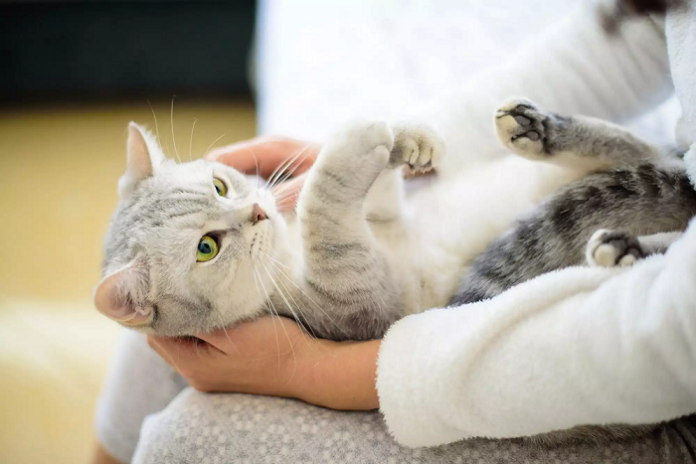Cats fill a home with tons of love and laughter. In addition to curling up in our laps and greeting us by circling our legs, they also chase ping pong balls around the room. Before bringing home a new cat, it’s necessary to take into account the fees that are associated with them.
How Much Does Getting a kitten Cost?
The adoption fee is the first expense you’ll incur when adopting a cat from a shelter. Depending on the shelter and the age of the cat you’re adopting, these costs can range from $50 to $175. You can cut your initial costs by adopting a cat from a shelter that may already be spayed or neutered, microchipped, or immunized (at least for their first round). The cost of purchasing a cat from a breeder is higher. For a cat, some breeders may charge up to $750.
Initial cat expenses
When you initially buy a cat, you’ll need to spend money on a few expensive but necessary goods. There are also a ton of extras you can get to keep your cat content and healthy.
Must-Haves
The ASPCA calculates that the capital expenses for a cat, which include early medical attention and spaying or neutering, come to about $365. Of course, this amount can change significantly depending on the goods you choose to buy.
- Litter: The cost will vary depending on how upscale you want to be. Litter boxes come in a variety of prices, from inexpensive plastic trays to more expensive automatic self-cleaning types. You might want to think about placing a litter box on each floor of your house if it has numerous levels.
- Carrier: To transport your cat to the vet and anywhere else they may need to go, you will need a carrier. There are numerous possibilities, just like litter boxes. You have the option of selecting a less expensive model or a more expensive, more luxurious model.
- Collar and ID tag: Even indoor cats should have a collar and ID tag in case they accidentally venture outside. Even if your cat has a microchip, this is still true because the ID tag will be the first thing someone will see if they come across your cat.
- Scratching posts or mats: Cats naturally like to scratch so, provide them with scratching posts or mats. They have a good location to scratch their itches thanks to sturdy posts and mats that prevent carpeting and furniture damage.
- Food and water dishes are also necessary for your cat, however you can use any that you already have lying about the house. Keep in mind to clean them frequently to avoid the growth of hazardous bacteria.
- The things on this list are nice-to-haves, but they can make your cat feel more at home. You must make the decision if you want to invest in them.
- Pet bed: While your cat may be perfectly content to wrap up on a soft blanket or towel, a pet bed can provide them with a comfortable spot to sleep.
- Pet fountain: If your cat prefers to drink from a running stream of water, you might want to consider buying a pet fountain.
- A shelf for cats: Cats enjoy perching high in order to have a comprehensive view of their surroundings. Installing robust cat shelves will allow them to climb up and observe everything.
What would be the Monthly Expenditure for a Cat?
The ASPCA estimates that you should budget $634 a year for your cat. This amounts to about $53 each month. Their annual expenditures include the following:
- Recurring medical expenses
- Cat food
- Treats
- Safe toys
The ASPCA also includes $30 for supplemental expenses for additional items like catnip or an extra scratching pad. Depending on your lifestyle, you can also incur other costs. For instance, if you work long hours, you might need to pay someone to stop over and check on your cat. If you take a trip, you could also have to hire a cat sitter or boarding facility. You can be assessed an additional cost for owning a cat if you reside in an apartment or condo to cover any potential damage.
What is the cost of cat insurance?
Your choice of coverage, along with other elements like your cat’s age and breed, will affect the price of your cat insurance. Be sure to balance coverage and price when looking for pet insurance. A cheap plan could be alluring, but if it doesn’t cover the care your cat might require, it won’t be any use to you.
You’ll need to include the cost of pet insurance or cat insurance in your budget if you choose to buy it. Remember that it may be simpler to plan your finances for a monthly premium than it is to deal with an unexpectedly high veterinarian charge.
Unexpected Costs
You could have to pay some unforeseen expenses, like repairing any harm your cat did to your home. With their long, pointed nails, cats can damage carpeting, scratch furniture, and cause other issues. It might be difficult to get rid of the scent of urine, which some cats may spray to indicate their territory.
Cats can also become unwell or injured, which can result in high veterinary expenses. Cats may misjudge a jump and break a paw, ingest a piece of string from the floor, necessitating surgery, or develop an upper respiratory infection. It’s impossible to foresee the exact cost of an accident or illness, but you may prepare financially by purchasing pet insurance.

